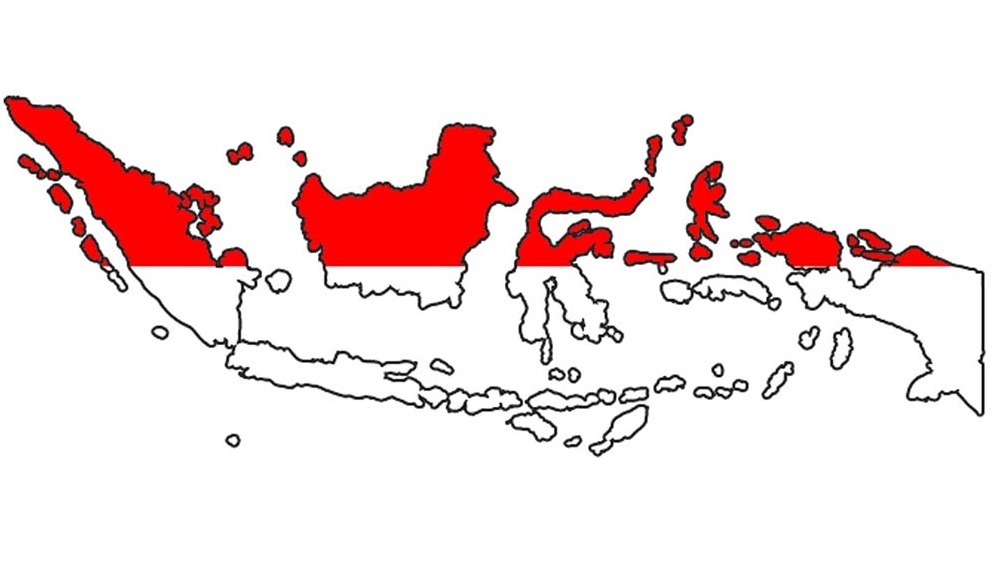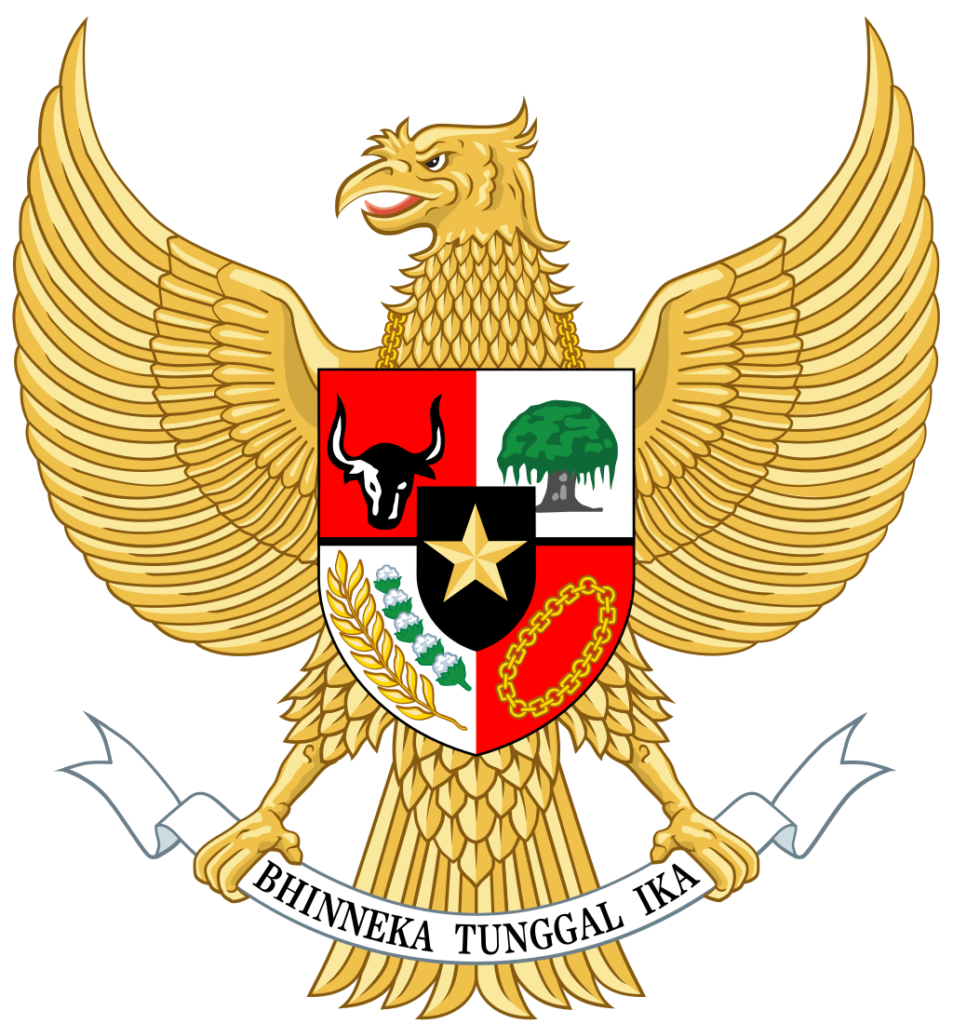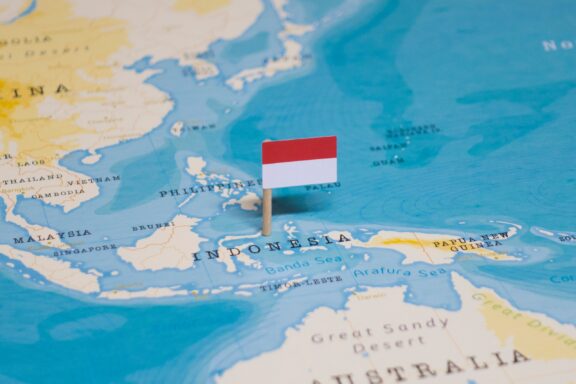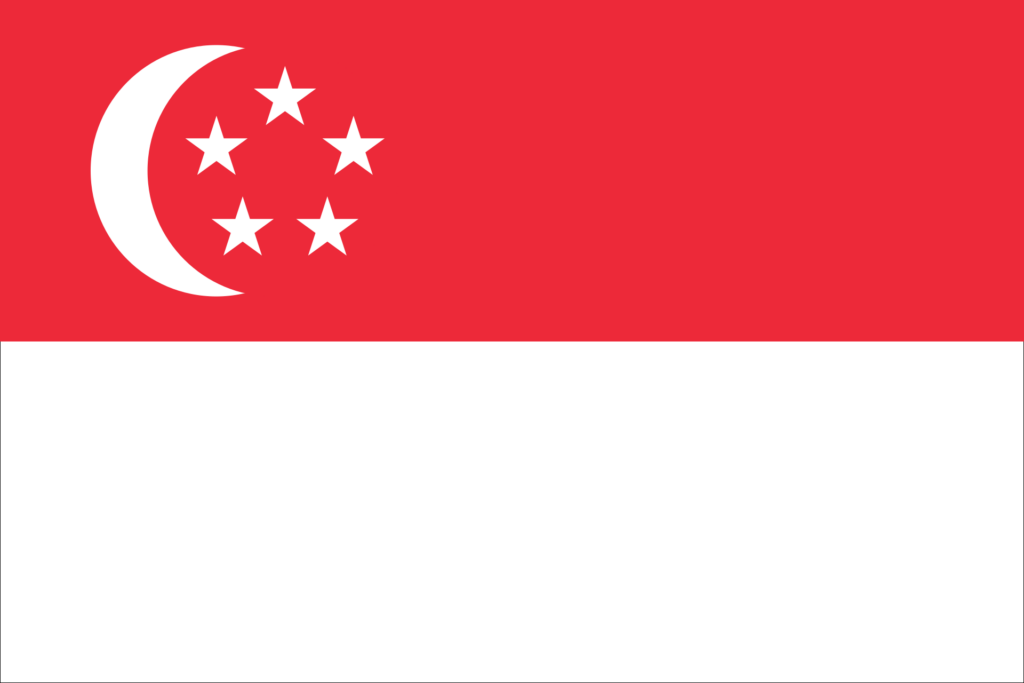The Indonesia flag, known as “Merah Putih” (Red and White), symbolizes the country’s harmony and independence. Its simple yet profound design reflects Indonesia’s diverse culture and steadfast spirit, marking its unique presence in the global community.
Flag of Indonesia

The Indonesian flag, distinguished by its two horizontal bands, presents a striking yet straightforward design. The flag’s layout visually represents Indonesia’s essence, with a bold red stripe gracing the upper half and a pristine white one below. Beyond its aesthetic appeal, this design holds a deeper significance, capturing the essence of the nation’s character.
Flag of Indonesia: Color Palette

Indonesia Flag Emoji: 🇮🇩
The color palette of the Indonesia flag, consisting solely of red and white, carries deep significance. Each color in this minimalistic yet powerful scheme plays a crucial role, symbolizing core values and philosophies integral to the Indonesian identity.
Meaning of Each Color

Red
In Indonesia’s flag, red symbolizes bravery and the physical aspects of life, with roots in both the historic banners of the Majapahit Empire and Austronesian mythology, where it represents Mother Earth.
This color, deeply embedded in Indonesian culture, also reflects the nation’s struggles and victories throughout its history, embodying its people’s vibrant spirit and resilience.
White
White in the flag represents purity, honesty, and the spiritual aspects of life, aligning with the Austronesian representation of Father Sky. It signifies the nation’s commitment to integrity and moral values, reinforcing the idea of harmony and balance in the diverse fabric of Indonesian society.
Indonesia’s Coat of Arms

The Coat of Arms of Indonesia, known as “Garuda Pancasila,” is a profound symbol representing the nation’s philosophical and moral values. It prominently features the mythical Garuda, a bird revered in Hindu and Buddhist mythology, embodying strength and speed.
The Garuda holds a shield with emblems, each depicting one of the five principles of Pancasila, the state philosophy. These principles focus on the unity of God, humanity, the nation, democracy, and social justice, reflecting Indonesia’s commitment to diversity and unity.
The emblem, with the national motto “Bhinneka Tunggal Ika” (Unity in Diversity), serves as a reminder of the country’s diverse yet unified identity and its guiding values for governance and societal harmony.
Historical Evolution and the Meaning Behind Changes
The flag of Indonesia, characterized by its red and white colors, has a history intertwined with the nation’s cultural and political journey.
The colors red and white have been significant in Indonesia’s history, notably used in the banners of ancient and medieval kingdoms like the Majapahit Empire. These colors were symbolic in various cultural contexts across the archipelago.

During Dutch colonial rule, these colors gained prominence as symbols of resistance. They embodied a sense of national identity and defiance against colonial domination.
The contemporary design of Indonesia’s flag was adopted on August 17, 1945, marking the country’s declaration of independence. This adoption signified a revival of the historic colors, symbolizing a new chapter of sovereignty and national unity.
Since then, the flag has remained unchanged, symbolizing Indonesia’s enduring identity and unity amidst its diverse cultural landscape.
In essence, the Indonesian flag has seen a consistent theme throughout its history, with its colors serving as a steadfast emblem of the nation’s heritage, struggles for freedom, and the unifying spirit of its people.
Overall Symbolic Meaning of the Flag

The flag of Indonesia is a symbol that captures the essence of Indonesia’s rich heritage and its aspiration for a harmonious and prosperous future. This flag, transcending its physical design, represents the Indonesian people’s collective journey and enduring ethos, embodying their strength and optimism as they navigate the evolving global landscape.
Similar Flags to the Flag of Indonesia
The flag of Indonesia, characterized by red and white stripes, shares design similarities with several other flags, primarily due to typical color schemes, often arising from coincidental or separate historical backgrounds.
Monaco

The flag of Monaco also features a two-striped design of red and white. The resemblance to the Indonesian flag is striking, though the shades of red and the dimensions of the flags differ. This similarity is mainly coincidental, as the two countries have distinct historical and cultural backgrounds.
Poland

The Polish flag consists of two horizontal stripes of white and red. The color arrangement is inverted compared to the Indonesian flag.
This similarity is coincidental and arises from shared use of red and white in European heraldry, contrasting with Indonesia’s use of these colors based on local cultural and historical contexts.
Singapore

While the design of Singapore’s flag is more complex, it features red and white as its primary colors. These colors point to common symbolism, with red often representing strength or bravery and white symbolizing purity or virtue across different cultures.
Conclusion
The Indonesian flag symbolizes the nation’s unity and history, resonating with citizens and distinguishing Indonesia in the global community. Its simple yet meaningful design fosters national pride and reflects the country’s unique identity.